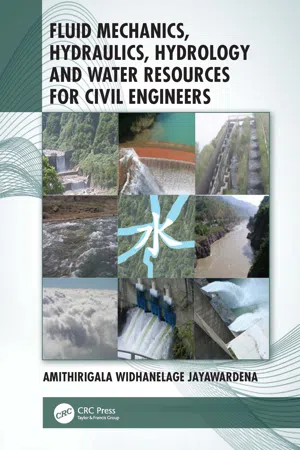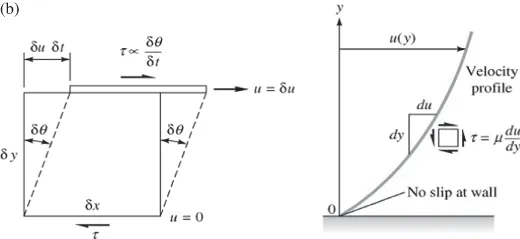
Fluid Mechanics, Hydraulics, Hydrology and Water Resources for Civil Engineers
- 854 pages
- English
- ePUB (mobile friendly)
- Available on iOS & Android
Fluid Mechanics, Hydraulics, Hydrology and Water Resources for Civil Engineers
About this book
One of the core areas of study in civil engineering concerns water that encompasses fluid mechanics, hydraulics and hydrology. Fluid mechanics provide the mathematical and scientific basis for hydraulics and hydrology that also have added empirical and practical contents. The knowledge contained in these three subjects is necessary for the optimal and equitable management of this precious resource that is not always available when and where it is needed, sometimes with conflicting demands.
The objective of Fluid Mechanics, Hydraulics, Hydrology and Water Resources for Civil Engineers is to assimilate these core study areas into a single source of knowledge. The contents highlight the theory and applications supplemented with worked examples and also include comprehensive references for follow-up studies.
The primary readership is civil engineering students who would normally go through these core subject areas sequentially spread over the duration of their studies. It is also a reference for practicing civil engineers in the water sector to refresh and update their skills.
Frequently asked questions
- Essential is ideal for learners and professionals who enjoy exploring a wide range of subjects. Access the Essential Library with 800,000+ trusted titles and best-sellers across business, personal growth, and the humanities. Includes unlimited reading time and Standard Read Aloud voice.
- Complete: Perfect for advanced learners and researchers needing full, unrestricted access. Unlock 1.4M+ books across hundreds of subjects, including academic and specialized titles. The Complete Plan also includes advanced features like Premium Read Aloud and Research Assistant.
Please note we cannot support devices running on iOS 13 and Android 7 or earlier. Learn more about using the app.
Information
Chapter 1
1.1 Fluid mechanics
1.1.1 Definition of a fluid


Table of contents
- Cover
- Half Title
- Title Page
- Copyright Page
- Table of Contents
- Preface
- Acknowledgments
- Author
- 1 Introduction
- 2 Historical development of the science of water
- 3 Fluid statics
- 4 Fluid kinematics
- 5 Governing equations of fluid motion
- 6 Ideal fluid flow
- 7 Viscous fluid flow – boundary layer
- 8 Dimensional analysis
- 9 Fluid flow measurements
- 10 Pipe flow
- 11 Pipe networks
- 12 Fluid machinery
- 13 Applications of basic fluid flow equations
- 14 Turbulence
- 15 Turbulence modelling
- 16 Computational fluid dynamics
- 17 Open channel flow
- 18 Gradually varied flow in open channels
- 19 Rapidly varying flows
- 20 Hydraulics of alluvial channels
- 21 Channel stability analysis
- 22 Sediment transport and deposition
- 23 Environmental hydraulics
- 24 Major hydraulic structures in the world
- 25 Hydrological cycle and its principal processes
- 26 Hydro-meteorology
- 27 Precipitation
- 28 Evaporation and evapo-transpiration
- 29 Infiltration
- 30 Runoff
- 31 Analysis and presentation of rainfall data
- 32 Unit hydrograph methods
- 33 Rainfall-runoff modelling
- 34 Flood routing
- 35 Flow through saturated porous media
- 36 Statistical methods in hydrology
- 37 Systems theory approach to hydrological modelling
- 38 Time series analysis and forecasting
- 39 Water − state of the resource
- 40 Sources and demand for water
- 41 Challenges in coping with water problems
- Subject Index
- Author Index